 |

VU
Lesson
17
THE
APPEARANCE AND DESIGN OF BUSINESS
MESSAGES
The
layout of a Business
Letter
Written
messages to persons outside the
organization are business letters.
Appearance of the letter
conveys
non-verbal
impression that affects a
reader's attitude; Business letters
are usually arranged in
different styles
or
layouts. The style or format
is determined by certain conventions.
There
are different styles in fashion
and it is difficult to say
which one is the best.
Nowadays firms use the
following
typestyles and
formats:
1.
The
Block-form / Modified
Block
2.
Full-Block
3.
The
Semi-Block
4.
AMS
(Administrative Management
Society)
1.
The
Block-form / Modified
Block
This
form is named so because
inside address, salutation and
paragraphs are blocked not indented in
this
form.
If plain paper is being used,
heading, date, complimentary close
and signature are
typewritten at the
horizontal
centre of the page. Place so
that they end near the right
hand margin.
Double
spaces between two parts
are given while single space
is used within the paragraph. In
Pakistan,
closed
punctuation is used. This
form is a time saver as no part is
indented in it.
2.
Full Block
This
format is considered to be the most
modern. All essential parts in this
form are started from the
left-
hand
margin. Open punctuation should be
used in this form. This form
saves time more than any
other
form.
3.
The Semi-Block
This
form is much used in
Pakistan. Heading, date, complimentary
close and signature sections
begin at the
horizontal
of the page or are placed so
that they end near the
right-hand margin. First line of
each
paragraph
is indented five to seven spaces.
Only closed form of
punctuation is used in this form.
This letter
style
is attractive on the page.
4.
AMS
(Administrative Management
Society)
It
has been in use since
1950, AMS is simple style.
It uses fullblock form
and open punctuation. No
salutation
or complimentary close is used. Reader's
name, is used in the first
and last sentences. Subject
and
writer's
name are typed in
capitals.
Punctuation
Styles
1.
Close Punctuation
Parts
of heading, date, inside
address, salutation and complimentary
close are punctuated.
2.
Standard
Punctuation
No
line of heading or inside
address is punctuated. After salutation
and complimentary close a comma
is
placed.
3.
Open
Punctuation
It
requires no punctuation even after the
salutation and the complimentary
close.
52
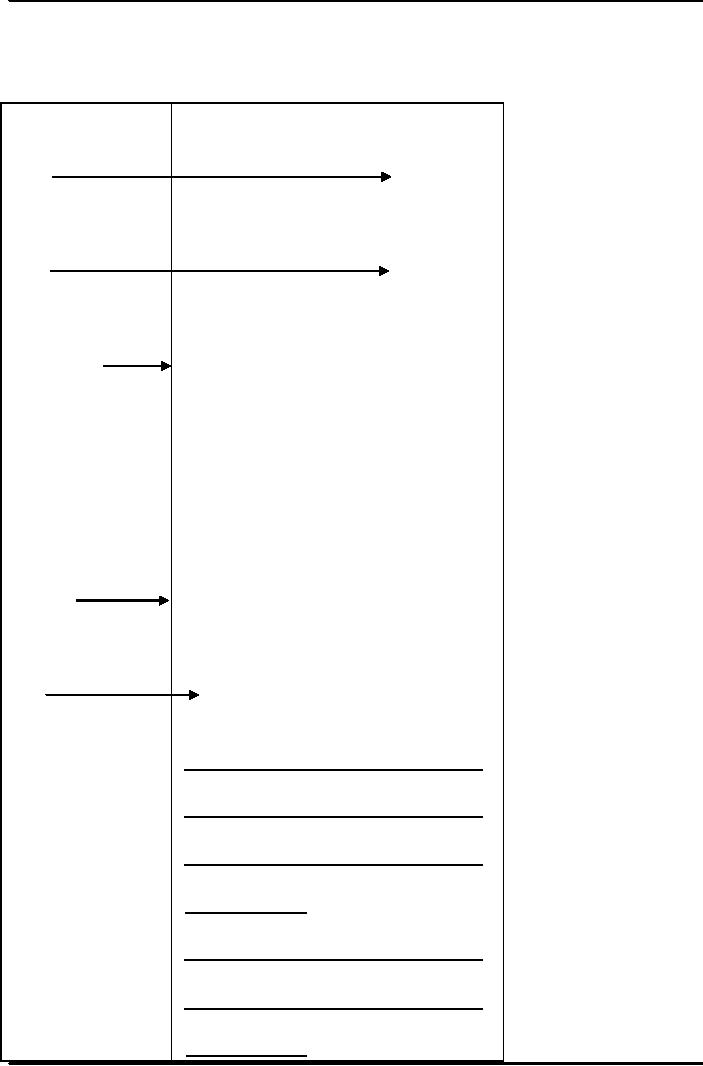
VU
Modified
Block Form (1)
Heading
or Letter
Public
Bank,
Head
30,
The
Mall,
Lahore.
Date
March
7,
2002
Inside
Address
The
General Manager,
Allied
Traders,
13,
Empress Market,
Karachi.
Salutation
Dear
Mr. Ali,
Body
.
.
53
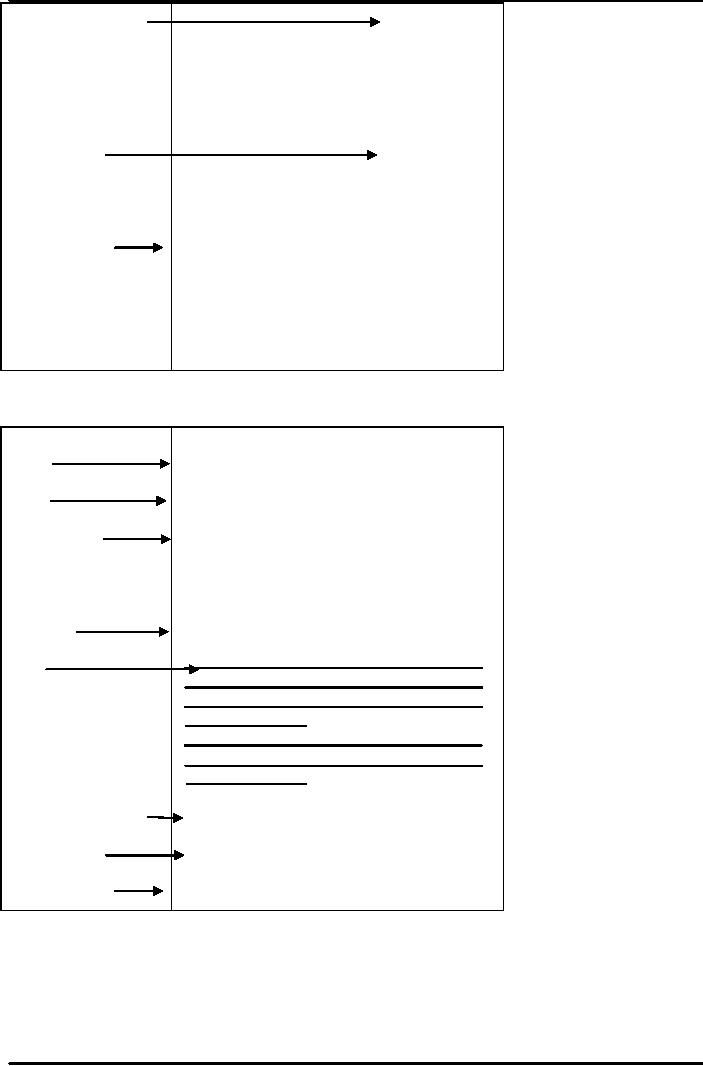
VU
Complimentary
Close
Yours
sincerely,
Signature
Area
Ali
Hassan
Reference
Initial
Sale
Manager
MA/na
Full
- Block
Public
Bank,
Heading
or Letter
30,
The Mall,
Head
Lahore.
March
7, 2002
Date
The
General Manager,
Inside
Address
Allied
Traders,
13,
Empress Market,
Karachi.
Dear
Mr. Ali,
Salutation
Body
.
.
Yours
sincerely,
Complimentary
Close
Ali
Hassan
Signature
Area
Sale
Manager
MA/na
Reference
Initial
54
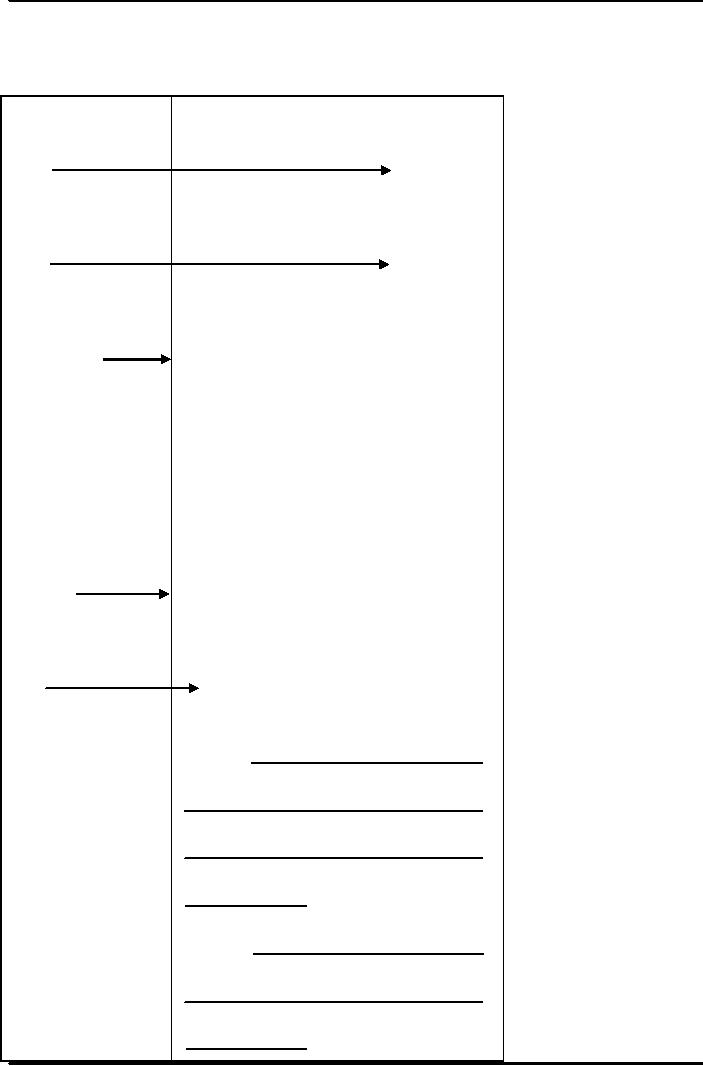
VU
Semi
Block Form
Heading
or Letter
Public
Bank,
Head
30,
The
Mall,
Lahore.
Date
March
7,
2002
Inside
Address
The
General Manager,
Allied
Traders,
13,
Empress Market,
Karachi.
Salutation
Dear
Mr. Ali,
Body
.
.
55
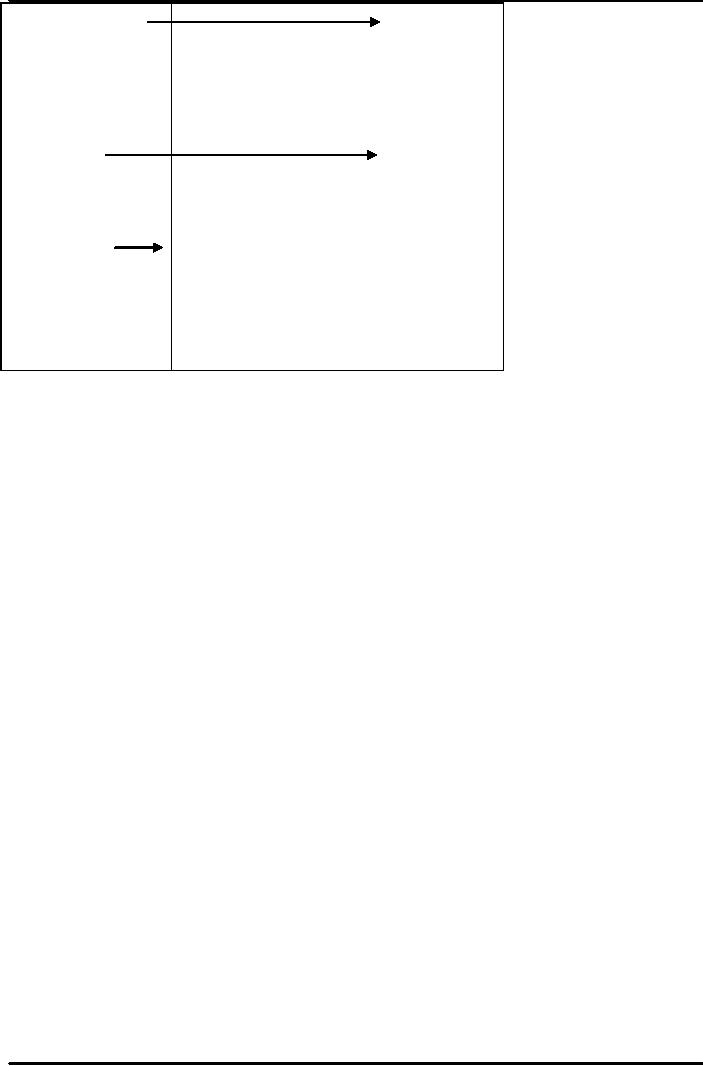
VU
Complimentary
Close
Yours
sincerely,
Signature
Area
Ali
Hassan
Reference
Initial
Sale
Manager
MA/na
Parts
of the Memorandum
MEMO
TO:
FROM:
DATE:
SUBJECT:
______________________________________________________
______________________________________________________
______________________________________________________
______________________________________________________
INTEROFFICE
MEMORADUM
TO:
Distribution
From:
Dept:
Dept:
Floor:
Floor
& Ext:
Subject:
Date:
_______________________________________________
_______________________________________________
Distribution
2
August
14, 2006
_______________________________________________
_______________________________________________
Ka
56
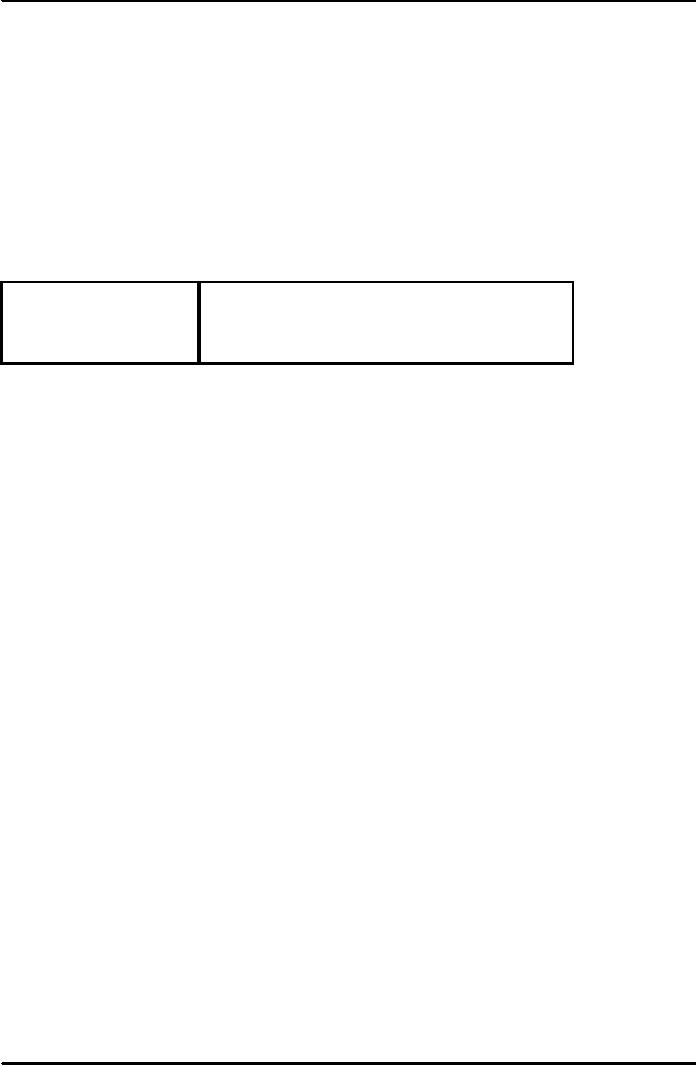
VU
Distribution:
1.
2.
3.
Memorandum
(Company
name)
Date:
______________
Form:
____________
To:
________________
Telephone:
________
Dept:
______________
Subject:
____________
For
your
Message,
comment, or reply
Approval
Information
Comment
Write
it * Date it * Sign it
Oral
message waste time, cause
annoying
Interruptions,
and
are
likely
to
be
misunderstood
or forgotten
Parts
of the Memorandum (1)
ABC
Company
Interoffice
Communication
To:
_________________________ Plant/department:
________
From:
_______________________ Plant/department:
________
Subject:
_____________________ Date:
___________________
Message
____________________________________________
___________________________________________________
___________________________________________________
___________________________________________________
Signed
______________________________________________
Reply:
______________________________________________
___________________________________________________
___________________________________________________
___________________________________________________
___________________________________________________
Date:
_____________________ Signed:
___________________
==============================================================
=
Person
receiving communication: retain this copy for
your records (1st page
white)
Originator:
detach this copy, send
remaining set, carbon instant,
for use for
replier
(2nd
p yellow)
==============================================================
Replier:
return this copy to
sender
(3rd
page pink)
57
Table of Contents:
- COMMUNICATION:Definition of Communication, Communication & Global Market
- FLOW OF COMMUNICATION:Internal Communication, External Communication
- THEORIES OF COMMUNICATION:Electronic Theory, Rhetorical Theory
- THE PROCESS OF COMMUNICATION & MISCOMMUNICATION:Message
- BARRIERS IN EFFECTIVE COMMUNICATION /COMMUNICATION FALLOFF
- NON- VERBAL COMMUNICATION:Analysing Nonverbal Communication
- NON- VERBAL COMMUNICATION:Environmental Factors
- TRAITS OF GOOD COMMUNICATORS:Careful Creation of the Message
- PRINCIPLES OF BUSINESS COMMUNICATION:Clarity
- CORRECTNESS:Conciseness, Conciseness Checklist, Correct words
- CONSIDERATION:Completeness
- INTERCULTURAL COMMUNICATION
- INTERCULTURAL COMMUNICATION:Education, Law and Regulations, Economics
- INDIVIDUAL CULTURAL VARIABLES:Acceptable Dress, Manners
- PROCESS OF PREPARING EFFECTIVE BUSINESS MESSAGES
- Composing the Messages:THE APPEARANCE AND DESIGN OF BUSINESS MESSAGES
- THE APPEARANCE AND DESIGN OF BUSINESS MESSAGES:Punctuation Styles
- COMMUNICATING THROUGH TECHNOLOGY:Email Etiquette, Electronic Media
- BASIC ORGANIZATIONAL PLANS:Writing Goodwill Letters
- LETTER WRITING:Direct Requests, Inquiries and General Requests
- LETTER WRITING:Replies to Inquiries, Model Letters
- LETTER WRITING:Placing Orders, Give the Information in a Clear Format
- LETTER WRITING:Claim and Adjustment Requests, Warm, Courteous Close
- LETTER WRITING:When The Buyer Is At Fault, Writing Credit Letters
- LETTER WRITING:Collection Letters, Collection Letter Series
- LETTER WRITING:Sales Letters, Know your Buyer, Prepare a List of Buyers
- MEMORANDUM & CIRCULAR:Purpose of Memo, Tone of Memorandums
- MINUTES OF THE MEETING:Committee Membersí Roles, Producing the Minutes
- BUSINESS REPORTS:A Model Report, Definition, Purpose of report
- BUSINESS REPORTS:Main Features of the Report, INTRODUCTION
- BUSINESS REPORTS:Prefatory Parts, Place of Title Page Items
- MARKET REPORTS:Classification of Markets, Wholesale Market
- JOB SEARCH AND EMPLOYMENT:Planning Your Career
- RESUME WRITING:The Chronological Resume, The Combination Resume
- RESUME & APPLICATION LETTER:Personal Details, Two Types of Job Letters
- JOB INQUIRY LETTER AND INTERVIEW:Understanding the Interview Process
- PROCESS OF PREPARING THE INTERVIEW:Planning for a Successful Interview
- ORAL PRESENTATION:Planning Oral Presentation, To Motivate
- ORAL PRESENTATION:Overcoming anxiety, Body Language
- LANGUAGE PRACTICE AND NEGOTIATION SKILLS:Psychological barriers
- NEGOTIATION AND LISTENING:Gather information that helps you
- THESIS WRITING AND PRESENTATION:Write down your ideas
- THESIS WRITING AND PRESENTATION:Sections of a Thesis (Format)
- RESEARCH METHODOLOGY:Studies Primarily Qualitative in Nature
- RESEARCH METHODOLOGY:Basic Rules, Basic Form, Basic Format for Books